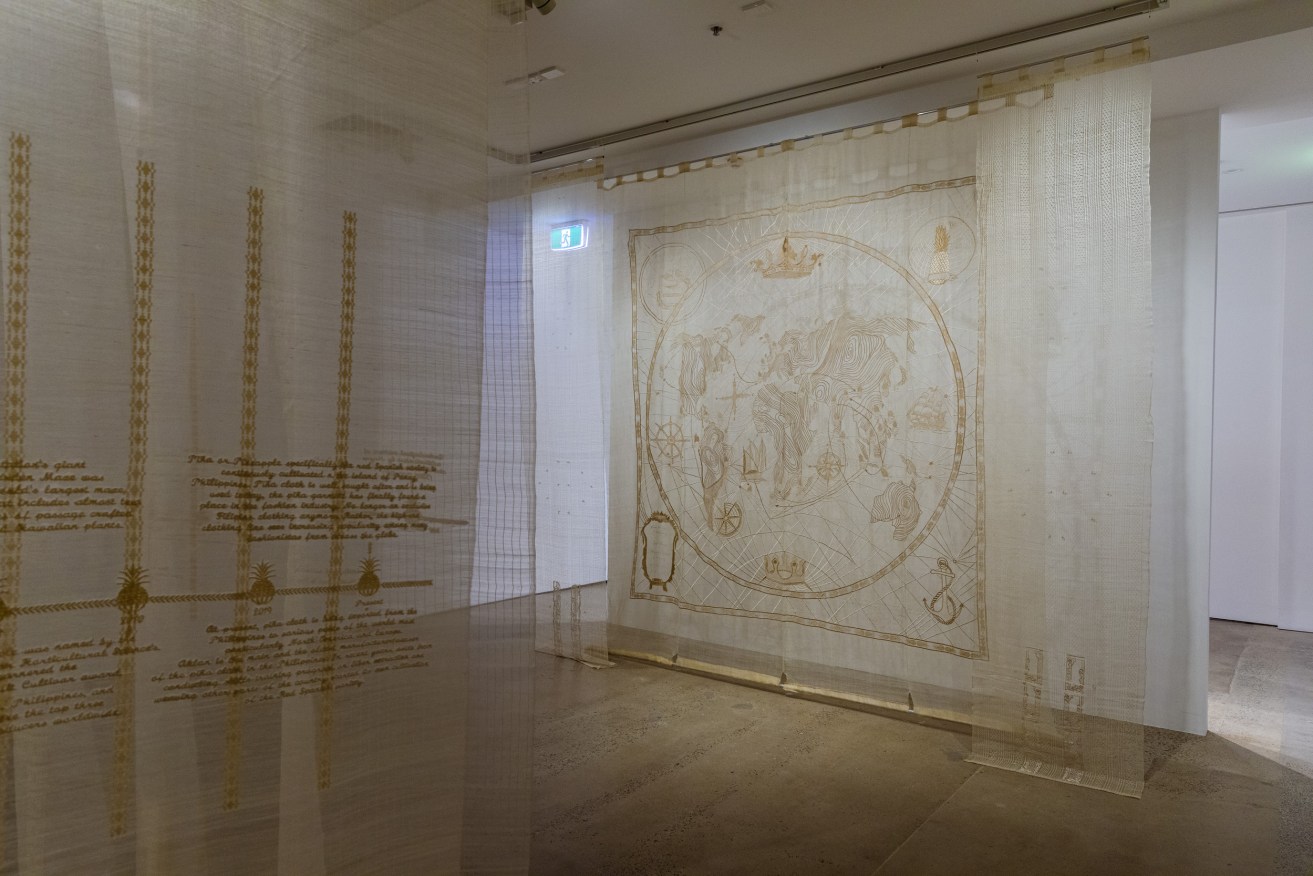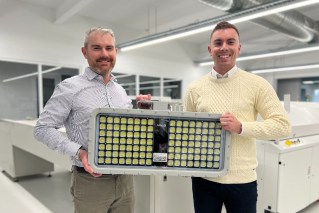Art duo the Aquilizans weave cultural stories from pineapple fibre
See Through, a new art installation by artist duo Isabel and Alfredo Aquilizan debuts at the Institute of Modern Art 8 October–18 December 2021.

Alfredo and Isabel Aquilizan See/Through 09 October–18 December 2021 (Image: IMA)
Made in the Philippines, where the couple are currently based, the project investigates the piña cloth; a textile deeply connected to the social and economic history of the Philippines.
Piña cloth is produced by the indigenous Aklanon people, on the northern coast of Panay island. It is created using pineapple fibre from the leaves of the red-pina plant (ananas comosus) and is extremely fine and delicate, with its dexterous weave giving it a luminous quality and shimmering surface lustre.
For this artwork the Aquilizans have collaborated with Aklanon weavers to produce large bolts of this labour-intense material. The fabric is then embroidered in the calado-style, a technique local to Lamban where the Aquilizan’s studio is based.
This embellishment tells the story if pineapple fibre; tracing its journey from plant to garment alongside the cultural histories embodied in the textile.
The intricate and luxurious white-on-white textile became synonymous with the Philippines globally through the eighteenth and nineteenth centuries, and highly sought-after among the upper echelons of European society for handkerchiefs, petticoats, and christening gowns.
Locally in the Philippines the piña has been used to make ‘barong tagalog’ and ‘baro’t saya’, customary garments now worn by men and women respectively on formal or important occasions.
The process of creating the textile is painstaking, detailed, and extremely difficult to mechanise. The fibres are fragile and snap easily, so work needs to be gentle and often strands need to be painstakingly reknotted.
The Philippines Folklife Museum details the labour involved in this process: “It usually takes 15 to 20 days to warp enough yarns to complete a ‘sucod’ of 18 to 20 ‘bucos’ or 54 to 60 meters of cloth…”
In the gallery, See Through celebrates piña as an object of beauty, a product of masterful indigenous knowledge and skill, and as a vessel for conveying complex and contested histories of place.
See Through demonstrates how weaving forges a connection between environment and person—linking the textile to the earth from which the fibre grew, to the hands that deftly created it, and the knowledge that has passed through generations of Aklanon people to retain its craft.
Embroidered into the surface of the textiles in the exhibition are symbols and a narrative timeline that traces the history of piña and the pineapple in the Philippines and across the globe.
Isabel and Alfredo Aquilizan use See Through to present their deep research of this remarkable fabric and honor their ongoing collaboration with the Aklanon weavers, all the while unravelling piña cloth and the potent histories it holds.


















